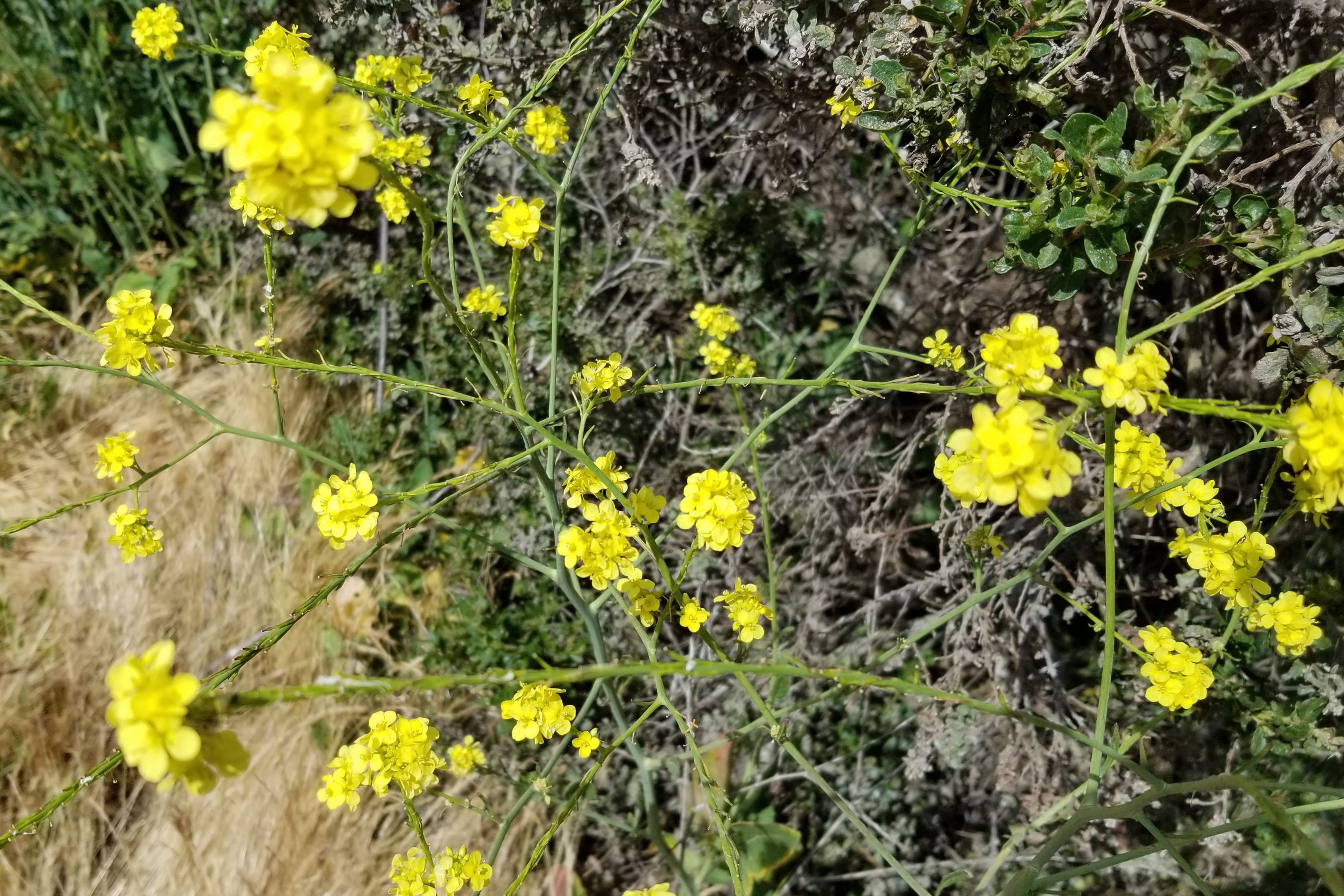Black mustard
(Brassica nigra)

Description
Brassica nigra, or black mustard, is an annual plant cultivated for its black or dark brown seeds, which are commonly used as a spice. It is native to tropical regions of North Africa, temperate regions of Europe, and parts of Asia. It is an upright plant, with large stalked leaves. They are covered with hairs or bristles at the base, but on the stem smoother. It can reach up to 1.2 m (3 ft 11 in) tall in moist fertile soil. It blooms in summer, from May (in the UK) onwards. The flowers have four yellow petals, which are twice as long as the sepals. Each stem has around four flowers at the top, forming a ring around the stem. Later, the plant forms long seed pods, that contain four rounded seeds. It was formally described by Karl Koch in "Deutschl. Fl." (or Deutschlands Flora) ed.3 on page 713 in 1833.This was based on a description by the Swedish botanist Carl Linnaeus. The Latin specific epithet nigra is derived from the Latin word for black. This is due to the black seeds. More than 2,000 years ago, the plant was used as a condiment; it was mentioned by the Roman author Columella in the 1st century A.D. The plant leaves were also pickled in vinegar. In 13th century France the seeds were ground and used. They were mixed with partially fermented grape juice to create "moût-ardent" (or burning must, "must" meaning unfermented grape juice). This became later "moutarde",now called mustard in English. A spice is generally made from ground seeds of the plant, with the seed coats removed. The small (1 mm) seeds are hard and vary in color from dark brown to black. They are flavorful, although they have almost no aroma. The seeds are commonly used in Indian cuisine, for example in curry, where it is known as rai.The seeds are usually thrown into hot oil or ghee, after which they pop, releasing a characteristic nutty flavor. The seeds have a significant amount of fatty oil, mainly oleic acid.This oil is used often as cooking oil in India, it is called "sarson ka tel". The young leaves, buds and flowers are edible. In Ethiopia, where the plant is cultivated as a vegetable in Gondar, Harar and Shewa, the shoots and leaves are consumed cooked and the seeds used as a spice. Its Amharic name is senafitch.
Taxonomic tree:







